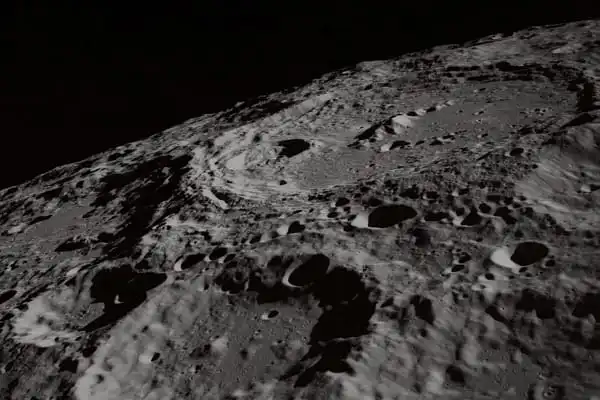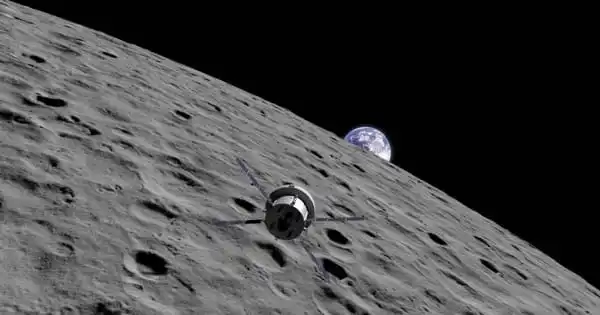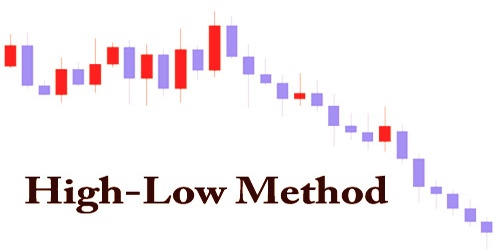Nanjing University scientists believe they can harness molecules discovered in lunar soil to create oxygen and fuel locally to enable crewed moon missions. The researchers examined lunar samples gathered by China’s Chang’e 5 spacecraft in late 2020 and discovered that iron-rich and titanium-rich compounds contained in the lunar material could work as catalysts in a process involving sunlight and carbon dioxide.
The “extraterrestrial photosynthesis” technique use lunar soil to electrolyze water taken from the moon into oxygen and hydrogen. According to the new research, carbon dioxide exhaled by astronauts can be mixed with hydrogen produced by water electrolysis to form hydrocarbons such as methane, which might be used as fuel.
The team now intends to develop a mechanism that would make use of lunar soil and solar radiation. The article, which was published online in the journal Joule, is part of a larger study into exploiting resources on the moon to aid human exploration. The ability to manufacture key materials locally would lower the expense of transporting them from Earth.
NASA is planning to establish a long-term, sustainable human presence on the moon via its Artemis program. Artemis aims to return people to the lunar surface in 2025 and set up a research outpost near the lunar south pole a few years later.
The new findings could be useful for China, which is constructing a joint moon base with Russia. The International Lunar Research Station (ILRS) will be robotic at first, but astronauts are expected to be able to visit by the mid-2030s. The Chang’e 8 mission from China is scheduled to launch later this decade to test technology for utilizing local resources and manufacturing with 3D printing.
NASA is also planning to establish a long-term, sustainable human presence on the moon via its Artemis program. Artemis aims to return people to the lunar surface in 2025 and set up a research outpost near the lunar south pole a few years later.
Chang’e 5 launched in November 2020 and returned to Earth a month later with 3.81 pounds (1.731 kg) of lunar material. It was the first successful lunar sample return since the Soviet Union’s Luna 24 mission in 1976.

The oxygen is released as water vapor as a result of this action. The excess hydrogen and other gases must be separated from the vapor before it can be electrolyzed. The oxygen produced is then condensed to liquid and stored. Experiments with lunar ilmenite, basalt, soil, and volcanic glass have shown that the requisite conditions and efficiency of this process are met.
Ilmenite – Much of the early research on lunar resources centered on the mineral ilmenite (FeTiO3) as a feedstock for oxygen synthesis. This material is quickly reduced, and oxygen yields of 8-10 wt% (mass of oxygen per mass of ilmenite) are possible. Ilmenite is found in some lunar basalts in concentrations as high as 25% by weight. Maximum yields estimated as a mass of oxygen per mass of rock thus range between 2-2.5 wt%.
Basalt – Previous oxygen production attempts used crushed but not otherwise beneficiated lunar basalt 70035. In a hydrogen reduction experiment at 1050°C, the sample yielded 2.93 wt percent oxygen. The mineral ilmenite took the most oxygen from this rock, followed by olivine and pyroxene in lesser proportions.
Soil – Oxygen may be extracted from a wide variety of unprocessed lunar soils, including ones with little or no ilmenite. Figure 1 depicts the oxygen yield measured for four lunar soils reacting with hydrogen at 1050°C. The rate of oxygen extraction was fastest during the first 30 minutes, but it was maintained throughout the whole three-hour experiment. The initial iron content of lunar soils has a substantial correlation with oxygen yield. Ilmenite, olivine, pyroxene, and glass are the most common iron-bearing phases in lunar soil. Each of these phases is an oxygen source. Ilmenite and iron-rich glass react the fastest and most thoroughly. Olivine has a lower reactivity. In lunar soil, pyroxene is the least reactive iron-bearing phase.
















